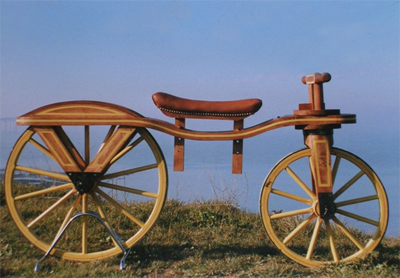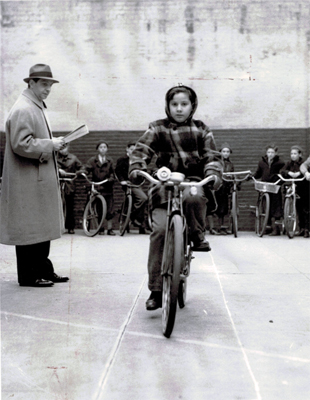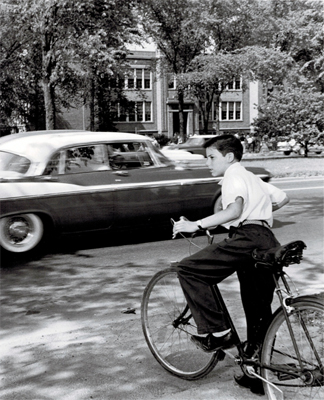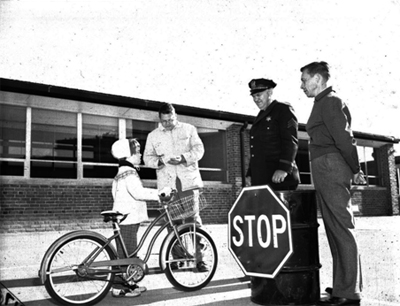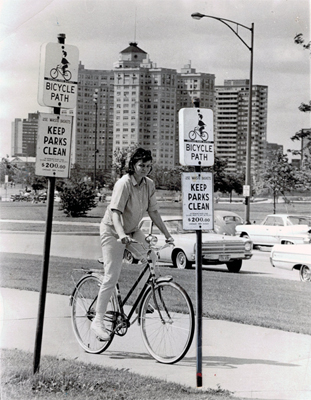While at first the helmet industry was centered on product competition, it soon began to focus on safety. Studies began
to show that helmets may be useful in preventing head injuries. Since then, campaigns have burgeoned that encourage
cyclists to don protective gear. Some states have made helmets mandatory for all riders, while others only enforce a
helmet law with children.
Today many signs show bikers wearing helmets to encourage safety practices when cycling.
Right or Responsibility
In the past decade, one of the clearest indicators of helmet initiatives was a shift in
signage. While the earlier picture of the Foster Ave bike path shows signs of riders without helmets, (not to mention a
real helmetless rider) bike signs today, like the one above, typically show the rider clearly donning head gear. These
signs provide a lot of very important regulation and reminders on the road, but also covertly stress the importance of
helmets. Whether it is a right or a responsibility, it is important to remember that riding with care and respect can
protect not only you but others on the road. These bike signs are the best indicator of this by providing many shades of
safety when posted from helmet wearing to lane sharing.

Regardless of what the signage shows, many people stress that it is their right to refuse to wear a helmet. It has
become a controversial topic
5 with people questioning the validity of helmet safety.
While the evidence is mixed, the real issue with bike safety seems to be a decrease in safety instruction due to an
increase in helmet campaigning. A more level approach seems to be increasing the focus on traffic laws and rules, and
educating cyclists on how to best avoid accidents and injuries well before a helmet is necessary. Of course, because
roads are unpredictable and can never be completely safe, a helmet is a useful second line of defense.Furthermore, as a
favorite activity for millions of people, bike safety should not be taken lightly.
